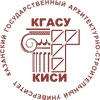About the authors
| First name, Middle name, Last name, Scientific degree, Scientific rank, Current position. Full and brief name of the organization, The organization address. | Burnashev A.I. – candidate of technical sciences, engineer E-mail: This e-mail address is being protected from spambots. You need JavaScript enabled to view it Ashrapov A.Kh. – post-graduate student E-mail: This e-mail address is being protected from spambots. You need JavaScript enabled to view it Abdrahmanova L.A. – doctor of technical sciences, professor E-mail: This e-mail address is being protected from spambots. You need JavaScript enabled to view it Nizamov R.K. – doctor of technical sciences, professor E-mail: This e-mail address is being protected from spambots. You need JavaScript enabled to view it Kazan State University of Architecture and Engineering The organization address: 420043, Russia, Kazan, Zelenaya st., 1 |
| Title of the article | Using of the nanomodified polyvinylchloride in wood- polymer composite’s receipt |
| Abstract. | The wood-polymer composite (WPC) is the relatively new high effective building product which is representing a polymeric material filled by wood flour, combining positive properties as thermoplastic polymer as an organic filler. Possibility of increasing degree of filling the polyvinylchloride compositions by wood flours a result of synchronous modification of a surface of PVC grains and particles of wood flour by the siliceous is shown. The increasing degree of filling by wood flour of polymer composite is reached due to the weakening of the acid centers both on a polymer and wood flour surfaces at the result of processing of their modification by the nanoscale coupling agent that promotes strengthening of acid-base interactions. Optimal concentrations of the nanomodifier respectively 0,7±0,1% for PVC and 1,75±0,1% for a wood flour are established. At simultaneous modification of siliceous PVC and a wood flour the maximal degree of filling of PVC composition is reached due to wood flour: 200 mass fractions on 100 mass fractions PVC. The received composition on all mechanical and technological characteristics surpasses in basic composition which is developed earlier. The main advantage of this composition is the increasing of the melt flow rate as the most important result. |
| Keywords. | Wood-polymer composite, polyvinylchloride, siliceous, nanomodification. |
| For citations: | Burnashev A.I., Ashrapov A.Kh., Abdrahmanova L.A., Nizamov R.K. Using of the nanomodified polyvinylchloride in wood- polymer composite’s receipt // Izvestiya KGASU. 2013. №2(24) P.226-232. |
















